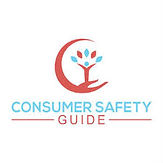News & Resources
Since e-cigarettes were introduced to the United States in 2007, vaping has been touted as a safer alternative to smoking cigarettes, even by anti-smoking advocates. The inventor of the first commercially successful e-cigarette claims he was motivated by his father’s death from lung cancer. That doesn’t mean that vaping is harm-free. There are too many factors and not enough research...
Parents are always looking for hidden dangers in their teens’ lives, but parental radar can easily miss prescription drug misuse. Prescriptions are accessible and widely distributed. Having a prescription bottle doesn’t usually arouse suspicion the way illegal drug accessories would, so it’s easier to keep prescription misuse hidden...
The American public relies on manufacturers and governmental agencies to ensure that products sold in the U.S. are safe when used as directed. We have information about some of the latest safety issues involving drugs, medical devices, food and other products.
A survey performed by the Journal of Child & Adolescent Substance Abuse found that high school athletes are one of the most at-risk populaces for becoming addicted to prescription pain medications. For many student athletes addiction begins with a visit to the doctor’s office after sustaining an injury. Read more...
Family members, teachers, friends and other loved ones are usually the first people to recognize the warning signs of underage drinking. While some symptoms are easy to identify, others may not be as apparent. Read more...
Drug abuse can inflict severe — sometimes permanent — damage on your teen’s mind, body and future. Though drug use may begin casually, your teen may not realize that they risk addiction. Read more...
Preventing teenagers from abusing drugs and alcohol means getting them through a vulnerable time in their life. Read more...
The effects of parent drug use on ages 6 to 12 and on children even younger are detrimental and lasting. Young children with parents using drugs may experience traumas including abuse or neglect. They may see things that traumatize them or that are hard to understand. Read more...
During adolescence, life is challenging enough just dealing with fitting in and the changes that occur as you grow into an adult. CBS News reports that a recent survey indicates approximately two million teens between the ages of 12 and 17 currently need treatment for a substance abuse problem. Read more...
There is a common misconception that teenagers who experiment with drugs and alcohol are inherently “bad kids.” Many parents assume that teenagers experiment because they are rebellious and want to lash out. That may be the reason a small percentage of teenagers try drugs and alcohol today, but the dangerous trend is not that simple or one-sided. Read more...
Time spent social networking increases the risk of teens smoking, drinking and using drugs, according to a national survey of American attitudes on substance abuse. Read more...
Teens are likely to try alcohol before they try either tobacco or marijuana, a new study concludes. The findings come from a study of 2,835 U.S. high school seniors, The Washington Post reports. Read more...
Adolescents experiment with drugs or continue taking them for several reasons. Read more...
Nearly 1 in 10 high school seniors admit to taking Vicodin for non-medical purposes. Prescription drug overdoses in the U.S. now outnumber traffic fatalities. Experts say once hooked, users often move to drugs like heroin, which is cheaper than OxyContin for the same high. Read more...
For millions of parents trying to raise drug-free kids, the ‘high’ school years are the most dangerous times their children face, and the ‘high’ schools are a dangerous place to send their kids. Read more...
According to research, young people who begin drinking before age 15 are four times more likely to develop alcohol dependence than those who begin drinking at age 21. Read more...
The more teenagers delay smoking marijuana until they're older, the better it is for their brains, but there may be little ill effect if they start after age 17, says a new Université de Montréal study. Read more...
Do you suspect that your child is abusing alcohol or using drugs? Are you worried? Have you noticed some changes with your child? As a parent, it is normal to be concerned. Read more...
Why is adolescence a critical time for preventing drug addiction? Early use of drugs increases a person’s chances of developing addiction. Drugs change brains—and this can lead to addiction and other serious problems. So, preventing early use of drugs or alcohol may go a long way in reducing these risks. If we can prevent young people from experimenting with drugs, we can prevent drug addiction. Read more...
Teens are likely to try alcohol before they try either tobacco or marijuana, a new study concludes. The findings come from a study of 2,835 U.S. high school seniors, The Washington Post reports. Read more...
Teens who see others drink or use drugs are more likely to engage in antisocial behavior on that same day, a new study suggests. The risk is greatest for young teens who have a “risk-taking” gene linked with sensitivity to substance use exposure. Read more...
Addiction involves craving for something intensely, loss of control over its use, and continuing involvement with it despite adverse consequences. Addiction changes the brain, first by subverting the way it registers pleasure and then by corrupting other normal drives such as learning and motivation. Although breaking an addiction is tough, it can be done. Read more...
People who use drugs typically begin doing so during adolescence or young adulthood, but the ground may be prepared for drug use much earlier, by circumstances and events that affect the child during the first several years of life and even before birth. Read more...
The United States is stuck in its drug abuse metaphors and in polarized arguments about them. Everyone has an opinion. One side insists that we must control supply, the other that we must reduce demand. People see addiction as either a disease or as a failure of will. None of this bumper-sticker analysis moves us forward. Read more...
Do school nurses REALLY need naloxone? The answer is YES. The data about drug overdose is alarming. The Centers for Disease Control and Prevention states, “The United States is in the midst of a prescription painkiller overdose epidemic.” Daily, 44 people will die from an overdose of prescription pain medication. The rise in deaths has mirrored the quadrupling of painkillers prescribed in the U.S. Read more...
Do school nurses REALLY need naloxone? The answer is YES. The data about drug overdose is alarming. The Centers for Disease Control and Prevention states, “The United States is in the midst of a prescription painkiller overdose epidemic.” Daily, 44 people will die from an overdose of prescription pain medication. The rise in deaths has mirrored the quadrupling of painkillers prescribed in the U.S. Read more...

























